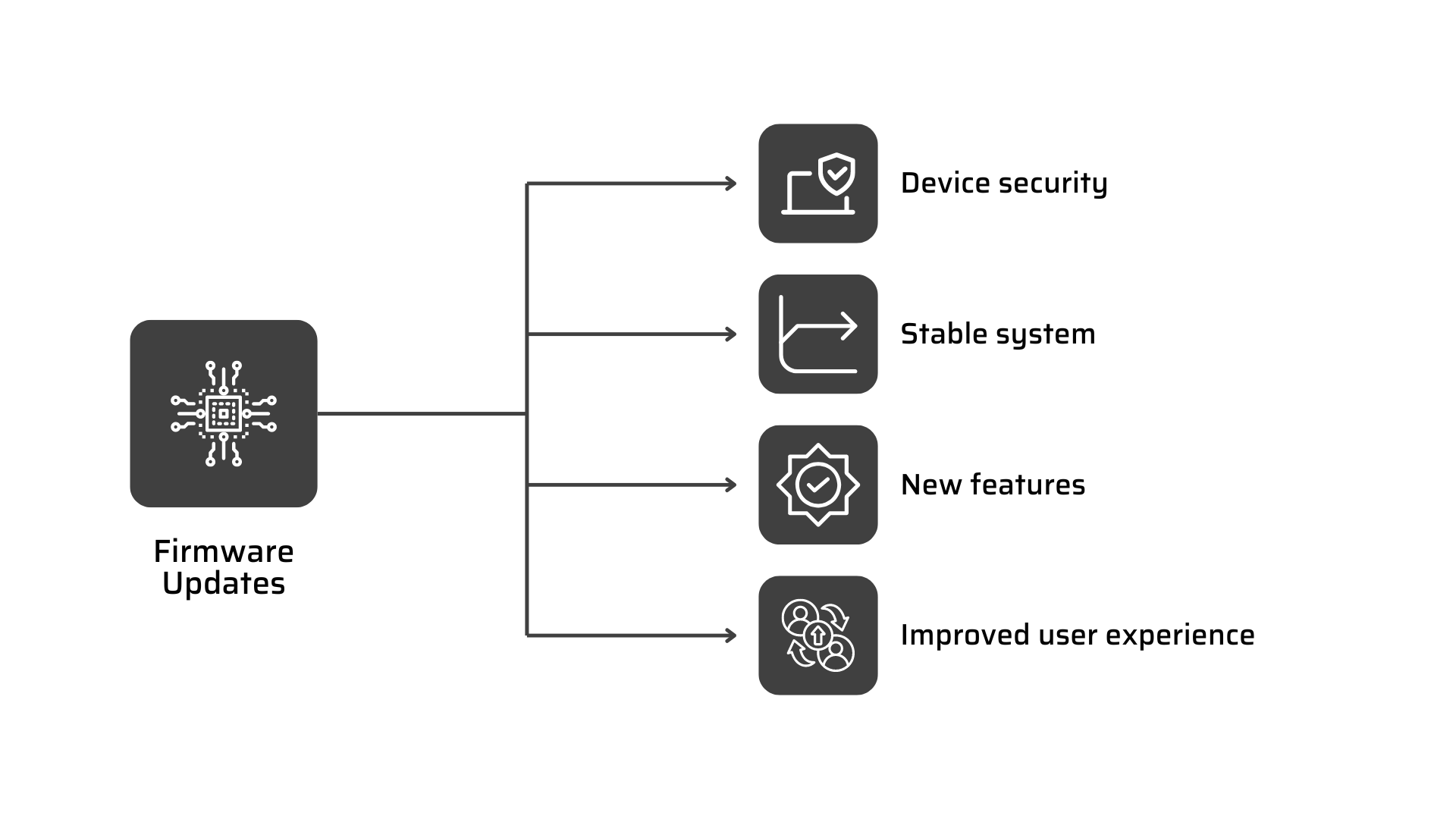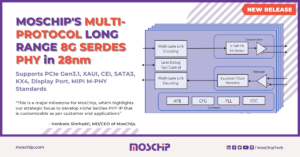
The importance of firmware updates in enhancing product performance is crucial. We have been surrounded by many devices that depend on hardware and software, but the rapid change brings us to change our devices very frequently to upgrade ourselves. But the firmware updates can be a game changer rather than changing or upgrading the hardware. Firmware updates quietly ensure that our device operates smoothly, securely, and efficiently and changes the functionality, look, and feel. It is responsible for controlling the essential functions of the device. Firmware updates can address bugs and vulnerabilities that may affect the device’s performance or security. They can also improve the device’s compatibility with other hardware and software components, enhance its power management, and introduce new features.
What is Firmware and its significance?
Firmware is a critical part of software that serves as a bridge between the hardware and software of a device. It is an embedded program that acts as the operating system for the specific hardware it is installed on. The firmware is responsible for managing the basic functions of the device, such as booting up, initializing hardware, and running the device’s applications. The major difference between firmware and regular software is that firmware is integrated into the device’s hardware. Unlike software that users can modify or uninstall, firmware is typically not accessible to end-users without specialized tools or knowledge. This makes firmware more secure and less vulnerable to malicious attacks.
Firmware is an essential component of every device since it keeps the hardware and software operating together without any issues. Firmware updates are necessary to guarantee that devices continue to function properly and to address any potential security flaws.
How does the Firmware work?
We already have a general understanding of what firmware is and how it safeguards our devices from potential security risks. However, have you ever wondered how firmware functions? Let’s take a closer look.
When a device is turned on, the firmware kicks off the process required to start up the system, activate critical hardware elements, and prepare for the execution of the operating system. Stored in non-volatile memory like read-only memory (ROM), firmware remains intact even when the device is powered off. This distinguishes it from other software that resides in rewritable RAM. The specifics of firmware operation, including its storage location and functionality, vary depending on its type and purpose.
There are several categories of firmware, each of them having different roles within a device’s software stack.
- Low-level firmware: This type of firmware is integral to the device’s hardware and is typically stored in ROM or programmable ROM (PROM) chips. It cannot be updated or modified and is often found in single-purpose devices like digital alarm clocks or TV remote controls. Low-level firmware essentially functions as the device’s operating system.
- High-level firmware: This type of firmware can be installed on rewritable memory. High-level firmware is more versatile as it can be updated or upgraded. Devices such as PCs, laptops, and game consoles utilize high-level firmware, which operates above low-level firmware in the software stack. High-level firmware handles more complex tasks and instructions.
- Subsystem firmware: This type of firmware runs independently of the main system firmware and is dedicated to specific hardware components like CPUs, sound cards, or monitors. It is a specialized form of high-level firmware tailored to the requirements of individual subsystems within a device.
By understanding the different types of firmware and their roles, developers can optimize device performance, ensure compatibility with hardware components, and implement necessary updates or enhancements over time.
How does the firmware enhance the product performance?
There are certain crucial aspects that every embedded device in the market must consider maintaining its performance, security, and functionality. Firmware update is one such factor that plays an important role in enhancing product performance. Below are a few examples of how firmware updates can improve the overall performance of the device.

Benefits of system Design and software
- Device security: Cybersecurity threats are constantly growing, making it unavoidable for devices to stay updated with the latest security patches. Firmware updates often include fixes for known vulnerabilities, helping to safeguard devices against potential attacks. By regularly updating firmware, one can reduce the risk of security breaches and protect their sensitive data.
- Improving system stability: Bugs and glitches can negatively impact the performance and reliability of devices. Firmware updates are designed to address these issues by providing bug fixes and optimizations that enhance the stability of your system. Firmware updates resolve software conflicts and compatibility issues which results in smoother operation and fewer unexpected crashes or malfunctions.
- Introducing new features and user experience: Firmware updates are not only meant to fix problems but also to provide new features and user experience to existing devices. Firmware updates can improve performance modes, refine user interfaces, and enhance compatibility with the latest technologies. They have the potential to transform the user experience, keep devices relevant in a rapidly growing market, and extend device functionality.
The Future of Firmware Updates
The importance of firmware updates will only grow. With the increase of Internet of Things (IoT) devices and interconnected ecosystems, the need for secure and reliable firmware updates becomes even more critical. Companies must prioritize regular firmware updates and streamline the update process to ensure that users can easily keep their devices up to date.
MosChip delivers world-class product engineering/system software and semiconductor design solutions. In a landscape where precision and efficiency are paramount, MosChip’s developed its expertise in designing the firmware for embedded devices.
About MosChip:
MosChip has 20+ years of experience in Semiconductor, Product Engineering services & Software, security with the strength of 1300+ engineers.
Established in 1999, MosChip has development centers in Hyderabad, Bangalore, Pune, and Ahmedabad (India) and a branch office in Santa Clara, USA. Our software expertise involves platform enablement (FPGA/ ASIC/ SoC/ processors), firmware and driver development, systems security, BSP and board bring-up, OS porting, middleware integration, product re-engineering and sustenance, device and embedded testing, test automation, IoT, AIML solution design and more. Our semiconductor offerings involve silicon design, verification, validation, and turnkey ASIC services. We are also a TSMC DCA (Design Center Alliance) Partner.






